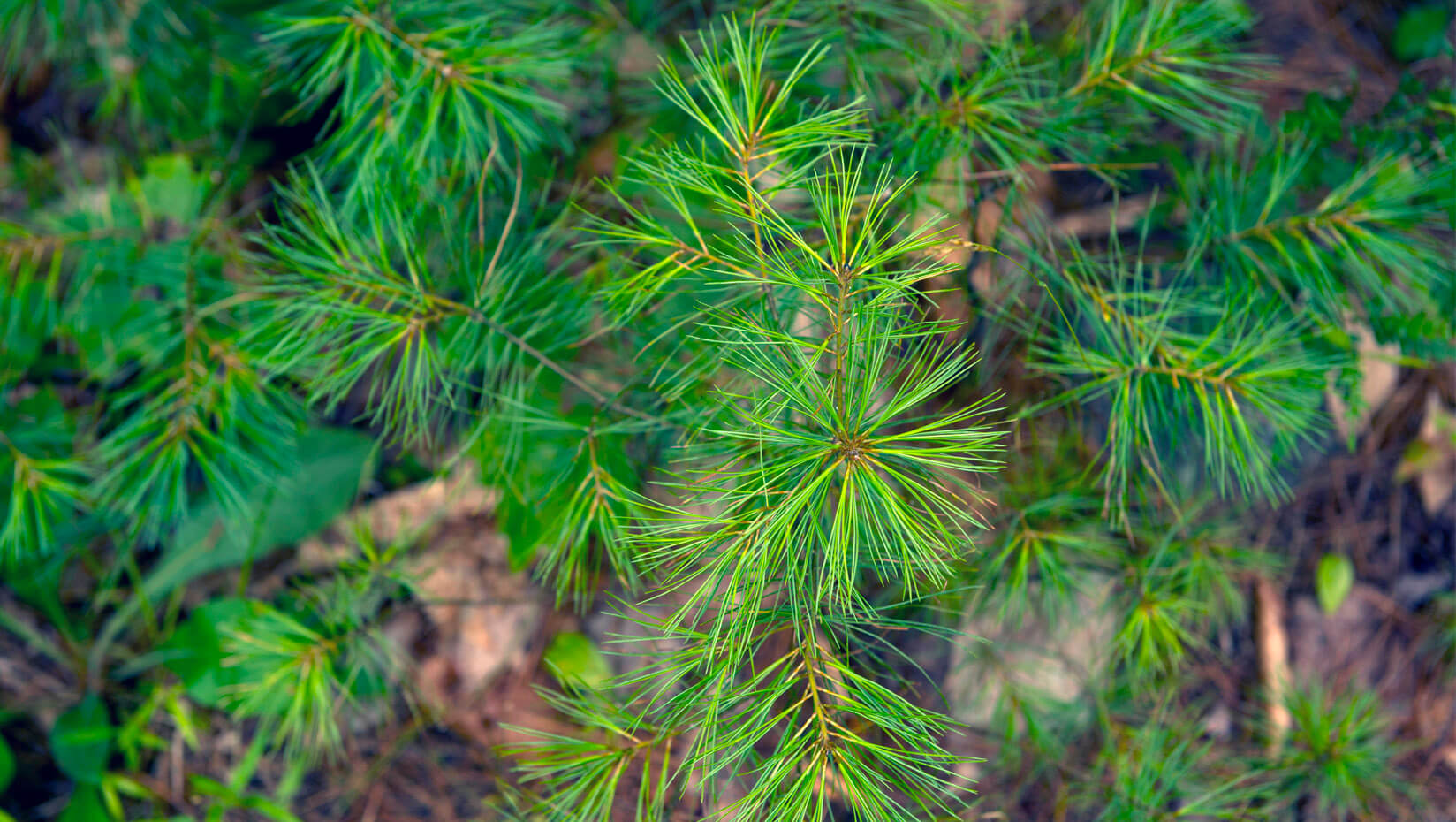
In changing climate, native fungal pathogen poses increasing health concerns for eastern white pine
Transcript
Kara Costanza:
A lot of researchers have referred to eastern white pine as the tree that built America.
Bill Livingston:
It’s an amazing tree. It’s also an important heritage to the state of Maine
Kara Costanza:
It was often used in boatbuilding. It was used to build houses. And so it’s really this staple tree that important both historically and economically.
Bill Livingston:
The value of the trees that are currently standing that could be used by the mills is probably around $2 billion dollars.
We’re peeling away the bark to look at the damage.
Kara Costanza:
Our project was specifically looking at how a native fungal pathogen, Caliciopsis pinea is affecting eastern white pine trees in eastern North America.
Bill Livingston:
We are seeing dead tissue there, so an indication of the canker.
Kara Costanza:
So if you look at the bark of a tree, they would see a lot of white streaks coming down the bark and then the forest products industry was reporting cankers or damage inside the wood that would cause a downgrade and cause it to lose value.
This we would classify as Caliciopsis.
When it can get past the bark or cambial tissue then it can infect the tree and cause this necrotic tissue and basically kills the tree where it enters.
Bill Livingston:
Shave off on the other side so we can see how wide the canker is.
Savannah Haines:
Trees can get damaged, they can get sick. This is there way of dealing with that. So if you get a cut on your body, you’re going to get a scab and it’s going to repair itself. Well trees don’t heal like we do they seal over wounds.
Kara Costanza:
With this study we’re hoping to figure out what’s causing the increase in Caliciopsis damage that we’re seeing. Some suggestions are that it’s related to climate change, precipitation increases in the spring as well as temperature changes. And then also land-use changes. White pine regenerates on old fields or abandoned farms but it’s not adapted to those sites and that may play into the increase we’ve seen in Caliciopsis.
Only about 7.5 to 13 percent of the trees we sampled had a lost value because of the fungus. But economically if you’re looking at 10 million board-feet of lumber processed, that can be thousands of dollars so it does add up quickly.
Stressed trees or trees growing in poorer conditions tend to be most affected. And so by thinning and having proactive management, the symptoms and the value lost due to this fungus can be reduced.
Bill Livingston:
Putting all this together will help the landowners who grow the trees, increase the value of them and then get more money when they sell them to the mill. And when the mill gets them they’ll get better quality wood that they can make their products from and increase their yield.
Kara Costanza:
We’re hoping that in the next year we can get out a few scientific publications from our research and also put together a white pine management guideline booklet that we can distribute land managers so that they something in hand that’s concrete that they can use to manage their forests.
Bill Livingston:
What’s happening to the white pine is not unique to Maine. There’s not a multistate working group coming together so that we can understand what’s happening to white pine throughout its range which will help put it in perspective what’s happening here in the state of Maine
